Uncontrolled burning, which causes material damage, can harm the health and life of people, the interests of the whole society, is called a fire. It can occur if there are three conditions. Must be a source of ignition:
- electric current, fire or chemical reaction;
- flammable materials, substances;
- the presence of an oxidizing agent, the role of which oxygen plays well.
The main damaging factors
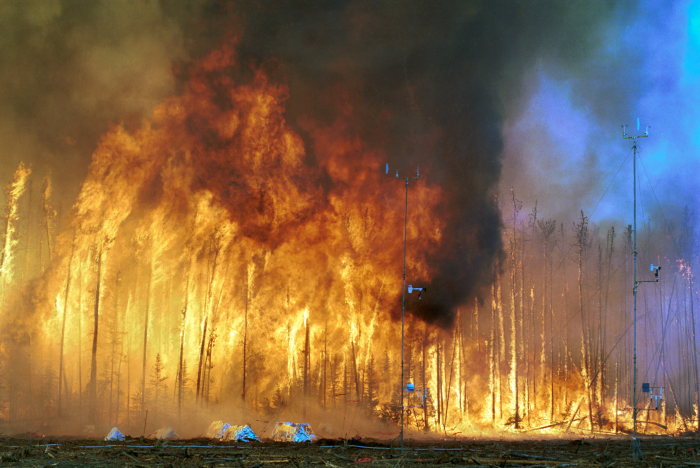 The list of what may cause destruction and death is defined at the federal level. So, the damaging factors of the fire include:
The list of what may cause destruction and death is defined at the federal level. So, the damaging factors of the fire include:
- high temperatures;
- heat flux;
- sparks and flames;
- toxic products arising from the combustion and thermal decomposition of many substances;
- reduced oxygen concentration.
Also, do not forget that the problems are caused by reduced visibility in smoke, confusion and panic of people.
The primary damaging factors of a fire are those phenomena that in most cases lead to property damage, personal injury, poisoning or even death. The destructive force is primarily fire, heat flow, and combustion products released into the air.
Associated Phenomena
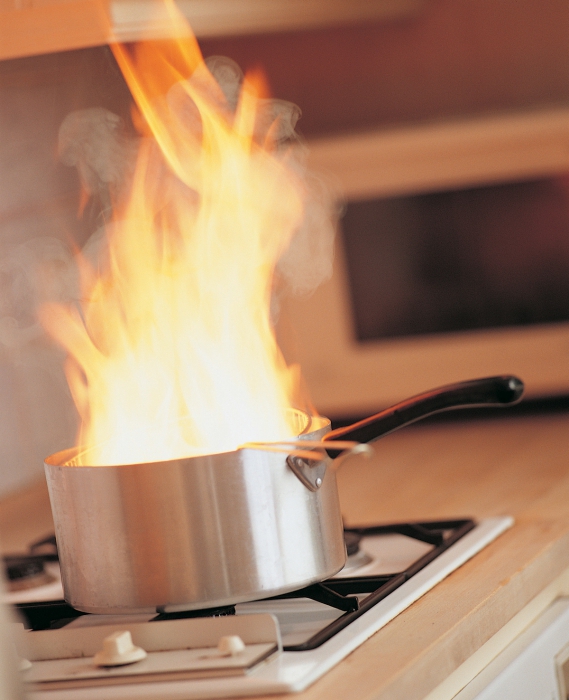
Unfortunately, the problems can bring not only the main damaging factors of the fire. Also accompanying phenomena have destructive power. These include:
- removal of high voltage to those parts of equipment, technological installations, units that conduct current;
- the possibility of explosion as a result of a fire;
- release into the environment of radioactive and toxic materials and substances.
Danger is represented by parts and fragments of damaged buildings, structures, vehicles, equipment and other property.
Possible problems
There are approximate statistics of which damaging fire factors are the most dangerous. So, almost ¾ of all those killed in the fire die from the effects of combustion products, which are toxic. According to rough estimates, for this reason, about 73% of people die in fires. Cause of death 20% of people call exposure to high temperatures. Another 5% of people die due to lack of oxygen. Only a small number of people die from secondary factors. So, only about 2% die from fragments carried by explosions, collapse of structures.
All the damaging factors of fire and explosion, even if they did not lead to the death of people, have a negative effect on them. They also destroy material values, anthropogenic and natural environment.
Features of fires in enclosed spaces
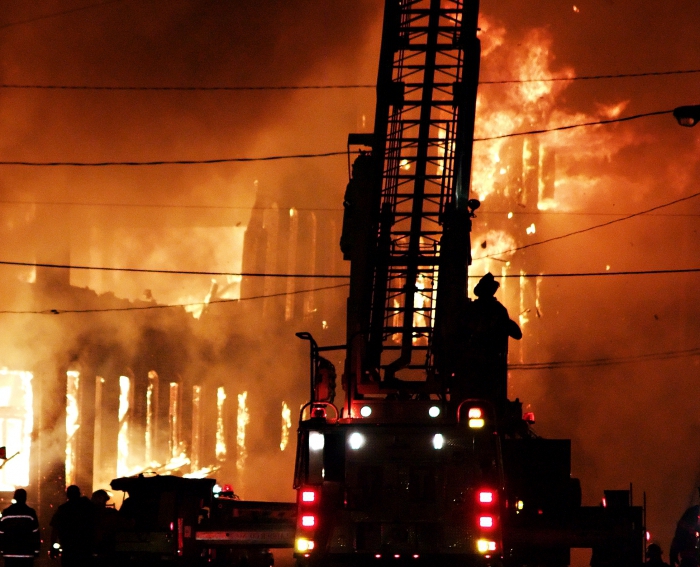 Fire is one of the main sources of problems. It is he who leads to all destruction. In enclosed spaces, a special burning phase is possible, which experts call the “flash." It occurs when a fire passes from an initial stage to a developed one. However, it is possible only in those rooms where there is sufficient gas exchange.
Fire is one of the main sources of problems. It is he who leads to all destruction. In enclosed spaces, a special burning phase is possible, which experts call the “flash." It occurs when a fire passes from an initial stage to a developed one. However, it is possible only in those rooms where there is sufficient gas exchange.
There are two types of outbreaks. This may be the so-called “full coverage” or “backward rebound”. The first situation occurs when the room is warmed up and at the same time ignition of various surfaces. But the second type of outbreaks occurs with a sudden sharp influx of fresh air. This can happen when opening doors or windows.
Fires in enterprises
Responsibility for all the consequences of fires in organizations lies with managers. The level of potential damage and human health depend on the level of training of management personnel and employees.
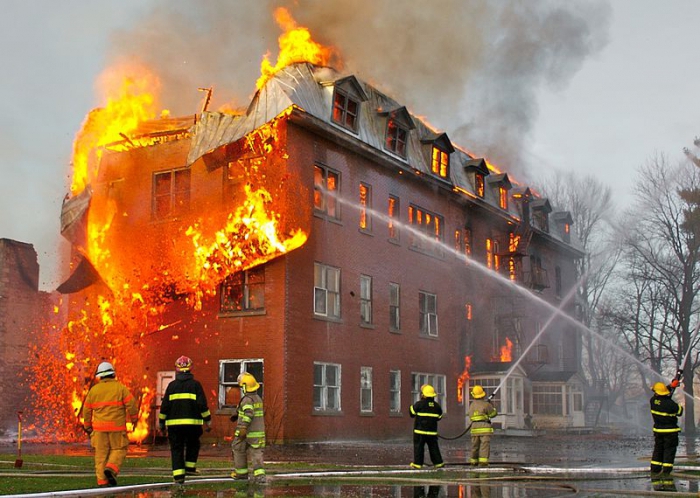 In order to minimize the damaging factors of the fire, organizations must have developed a special action plan.So, company employees must report a fire to the fire department and the head of the company. Prior to the arrival of rescuers, it is important to evacuate people and begin extinguishing fires. You must also turn off all equipment.
In order to minimize the damaging factors of the fire, organizations must have developed a special action plan.So, company employees must report a fire to the fire department and the head of the company. Prior to the arrival of rescuers, it is important to evacuate people and begin extinguishing fires. You must also turn off all equipment.
If a fire started in electrical installations that cannot be switched off instantly, you can only use special carbon dioxide fire extinguishers or sand. Use of water in such cases is prohibited.
If there are injured, it is the leader who is responsible for organizing first aid, delivering them to hospitals.
Hazard rating
Assessment of all dangerous fire factors is carried out taking into account how they can have an impact on human health and life. So, the main damaging factors of the fire cause problems. Specialists established limit values for each of them.
So, problems arise when the temperature in Celsius exceeds 70aboutwhile the thermal radiation should be more than 500 W / m2. The content of various substances in the air is also evaluated. It becomes critically dangerous when the oxygen content in it becomes less than 17%, and the level of carbon dioxide (the so-called carbon monoxide) reaches 6%.
So, when fighting fires at a temperature of more than +70 aboutWith a safe time during which you can stay there, it is from 5 to 10 minutes, depending on the level of humidity. It is possible to stay in a place of ignition at this temperature for no more than 20-35 minutes - these are the maximum permissible values. It should be noted that the first time period is indicated for humidity at 20%, and the second - 75%.
Possible problems
 Each of the damaging factors is quite dangerous. But worst of all, when they work together. So, several degrees of burns are shared, depending on the degree of heat flow.
Each of the damaging factors is quite dangerous. But worst of all, when they work together. So, several degrees of burns are shared, depending on the degree of heat flow.
The first stage is characterized by reddening of the skin, the second - by the appearance of blisters and possible disability. In the third degree, certain areas of the skin die. The fourth is characterized by the fact that the layers of the skin and deep tissue are deadened. Two second degrees of burns can cause death.
Also the damaging factors of the fire are: smoke, cloudy air, carbon monoxide, toxic fumes. All this as a result becomes one of the main causes of death - poisoning and suffocation. Heat stroke also leads to death. If the air warms up to 70about Celsius, then burns to the larynx and lungs are possible.
If a fire started indoors, then people often panic. This leads to rash acts that cause death. So, the most common of them is a crush in narrow rooms (for example, corridors) or jumping out of the windows of multi-storey buildings and premises.
Secondary damaging factors of the fire also lead to injuries, burns and deaths. People die under collapsed building structures or in floor failures.
Fire propagation rate
It is important to understand that the extent of the problems will depend on how quickly the fire spreads. This is influenced by both the ambient temperature and the types of materials in the room. Some of them may ignite spontaneously. True, this becomes possible provided that a certain temperature level is reached in the room.
With its growth, the rate of spread of fire increases. Also interesting is the fact that fire moves upward on vertical surfaces 8-10 times faster than the average values of its distribution.
If the room temperature reaches 100 aboutWith, the windows in the windows begin to crumble. And this leads to an additional influx of oxygen and the emergence of the so-called "backward rebound." In addition, the flame begins to spread to neighboring buildings and premises.This is due to the transfer of burning elements or thermal radiation.
It is impossible to underestimate the damaging factors of the fire. After all, danger to people arises within 0.5-6 minutes after its onset. This is one of the main reasons why people should be evacuated from their premises immediately. It is also important to immediately begin to extinguish the fires.
Fire in open areas
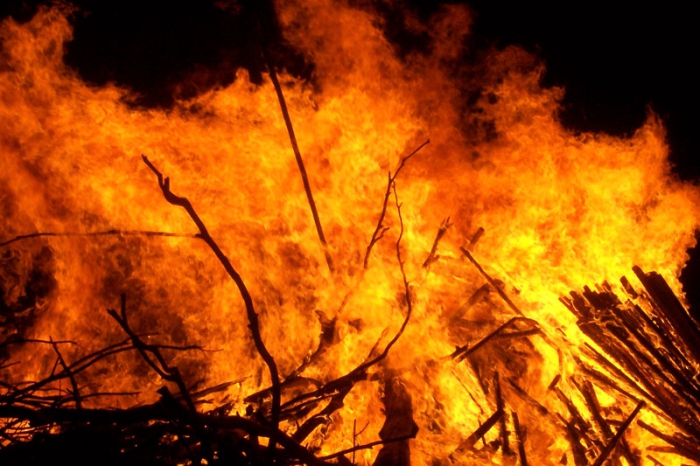 Many mistakenly believe that only indoor fires are most dangerous. But it's not always the case. The fire in the building can be localized, preventing it from spreading. It is much more dangerous to fire in open areas, for example, in fields or forests, on peatlands. Dry leaves, branches in forests, ears of fields burn well.
Many mistakenly believe that only indoor fires are most dangerous. But it's not always the case. The fire in the building can be localized, preventing it from spreading. It is much more dangerous to fire in open areas, for example, in fields or forests, on peatlands. Dry leaves, branches in forests, ears of fields burn well.
Heat flow and open fire are the main damaging factors of a forest fire. But do not forget about the burnout of oxygen and smoke. In dry weather, which is often observed in the second part of summer, fires can cover vast areas. They can damage not only forests, agricultural land, but also nearby small settlements. They burn out a layer of humus from the soil, destroy vegetation, and expel animals from forests. Also, as a result of the fire, power lines and communications are disabled, ferries, bridges, pipelines can be destroyed.
Therefore, it is so important that actions to extinguish the fire were taken in a timely manner.
People actions
Once in the zone of fire spread, it is important to remember that the damaging factors of a fire include not only thermal radiation, but also an increase in carbon dioxide concentration. To avoid poisoning by inhalation of fumes, use protective equipment. The simplest is a regular shawl or a small piece of cloth dipped in water. They need to protect their nose and mouth.
To get out of the problem zone, it is necessary to move against the wind, parallel to the spread of fire. It is advisable to go to the nearest body of water - it can be a stream, a lake or a river. Once in a safe place, you must report the fire to a special service or forestry.
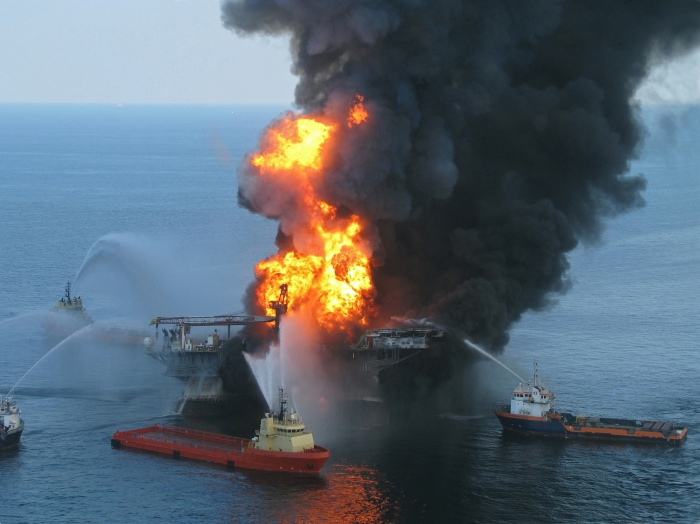
To assess the degree of problems, you need to know that on the plains fire spreads at a speed of about 0.5-1.5 km / h. But in the forests, the situation is much worse. Horse fires, as a rule, spread at a speed of 8-25 km / h. But there are situations when they can cover new territories much faster. There have been cases when their speed reached 100 km / h. Peat fires spread very slowly, usually 2-10 meters per day. But the difficulty is that they are hard to put out.








